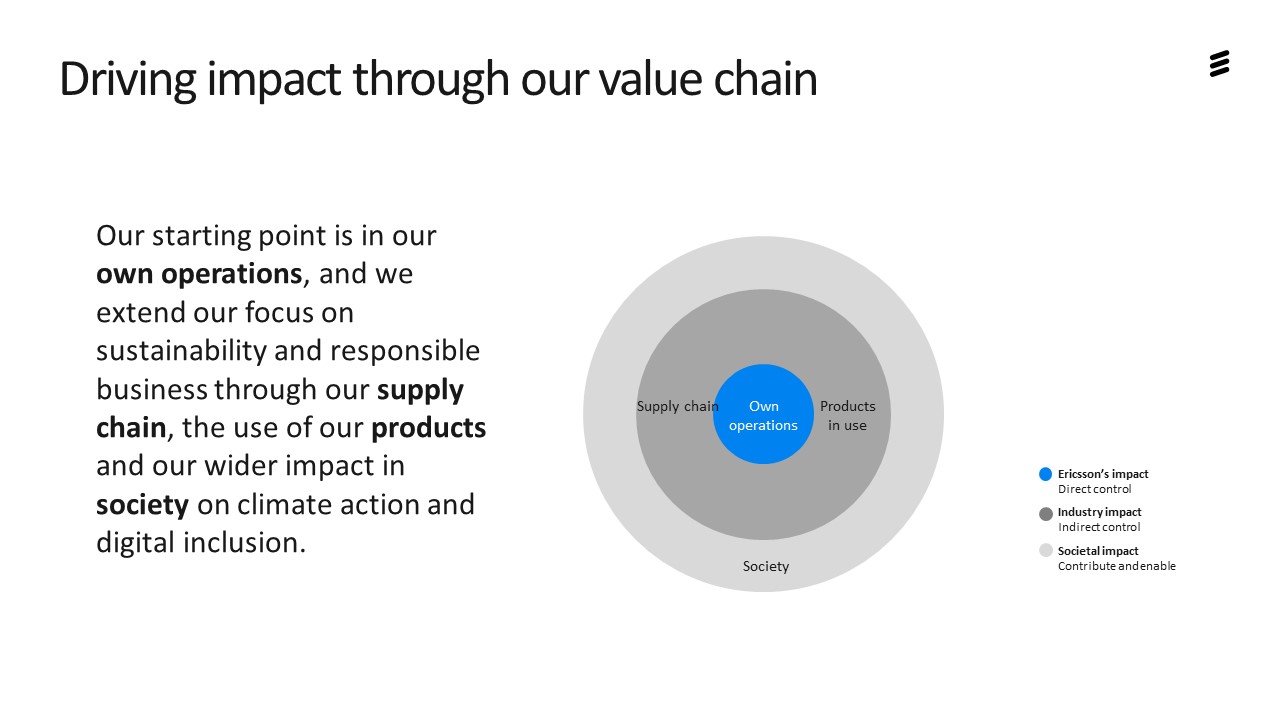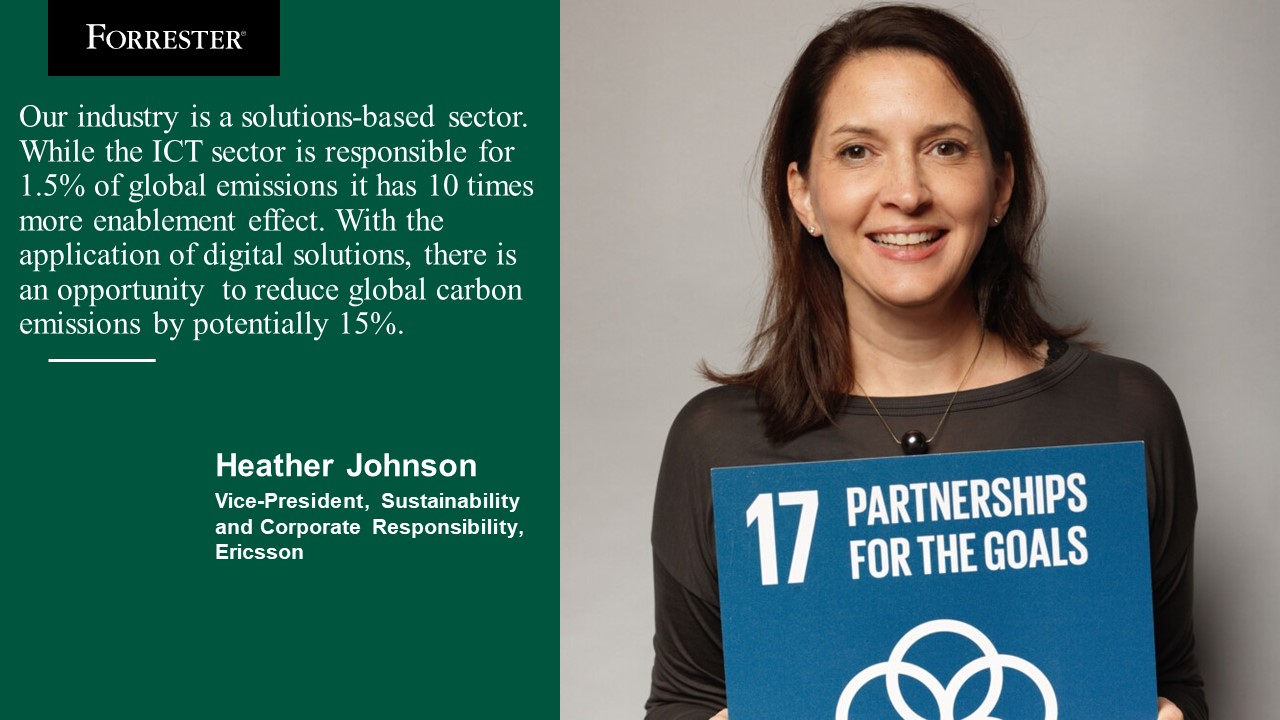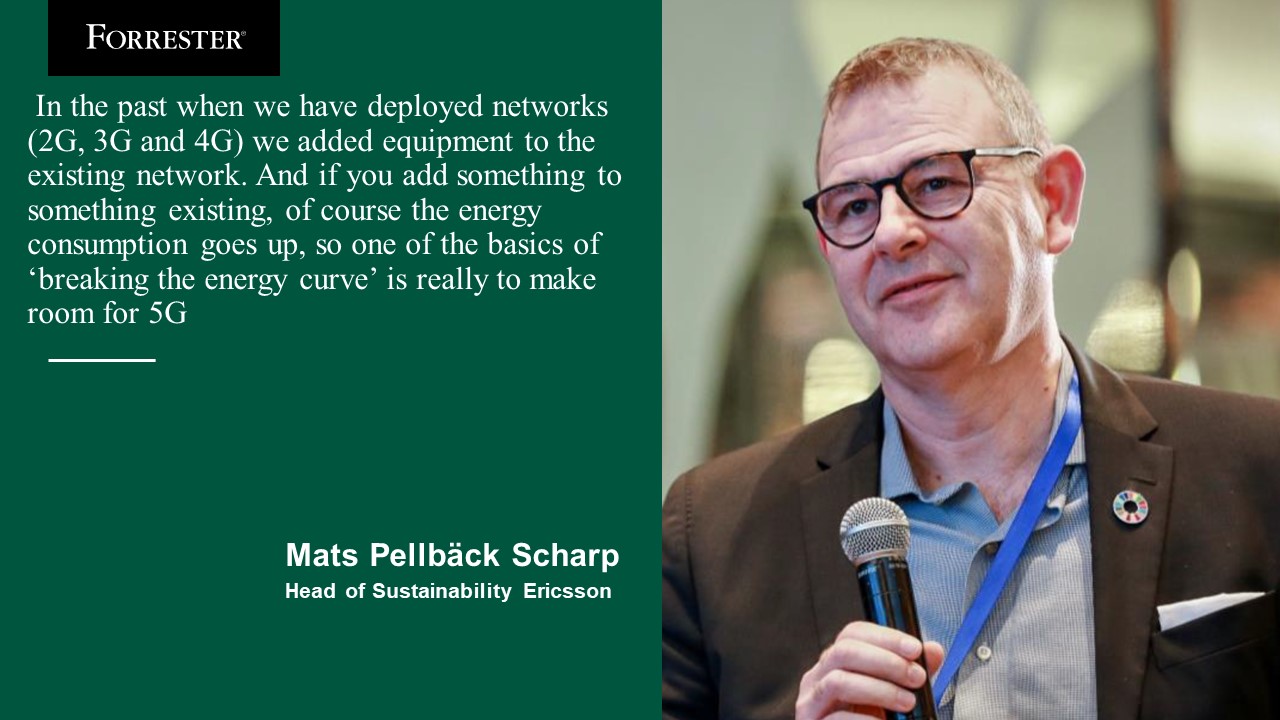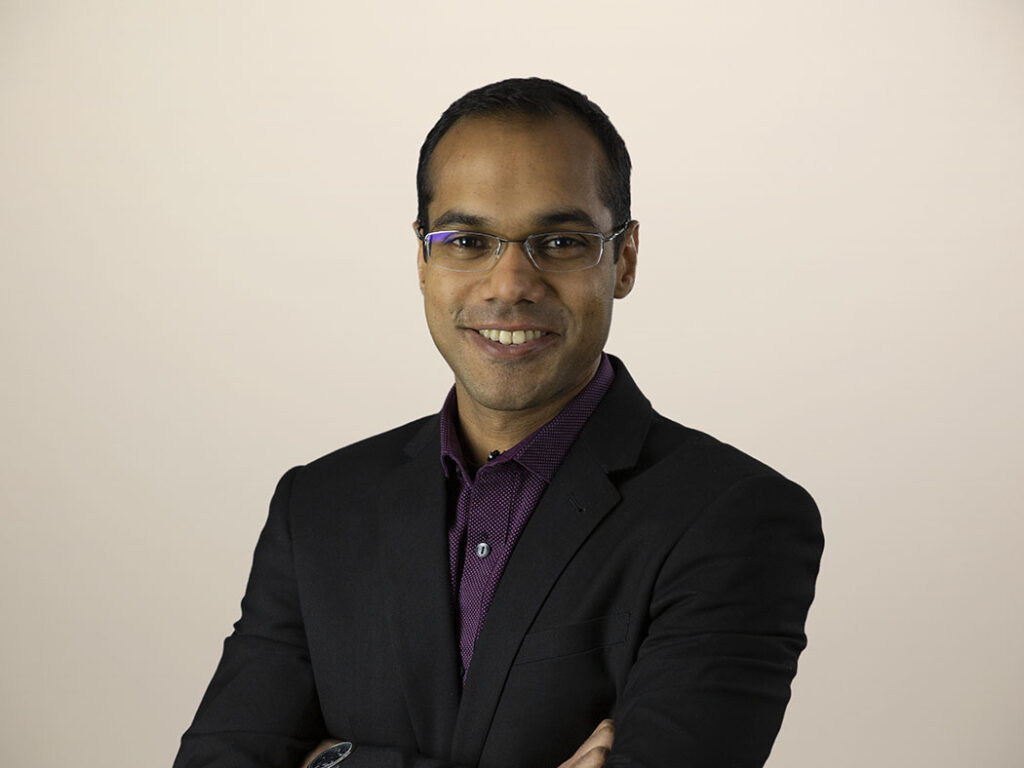Forr The Planet: Sustainability Interview Series — Ericsson

(Photo by Abhinav Sunil)
As the key backbone provider for connectivity and network infrastructure, the telecommunications industry has been in a spotlight for sustainability. With the advent of 5G, what can we do to build our new networks to be as energy-efficient as possible?
I talked to Ericsson’s Heather Johnson, VP for sustainability and corporate responsibility at Ericsson, and Mats Pellbäck Scharp, head of sustainability, about Ericsson’s internal sustainability efforts, the technical implications of 5G, case studies, and a network approach called “breaking the energy curve.”
Sustainability For Ericsson And The Telecommunications Industry
Abhijit: First, what are the key initiatives Ericsson is focused on internally as an organization for sustainability? Where are you investing the most? Where do you see the most returns on these investments? And what matters most?
Heather: To set a little context on how we think about sustainability and corporate social responsibility, we approach this from three pillars. Corporate responsibility is really the foundation of responsible business, and there are two areas of positive impact: environmental sustainability and digital inclusion.
Within environmental sustainability, the work we do can be envisioned to fall into three concentric circles or three horizons. If you start in the center, that is Ericsson as an enterprise, our impact as a business. The next circle around that is our industry perspective, and that spans the supply chain and all the way through the portfolio and really thinking about the industry. And then the outer circle is our technology in use — the societal use of the technology that we deliver. So I think as we go through some of these questions, I’ll be referring to where we are in this image.
Regarding internal sustainability, we have a science-based target to reduce our carbon emissions by 35% on our own activities by 2022, with a baseline of 2016, and so this is in line with the 1.5-degree global warming limit trajectory.
Additionally, in 2019, we committed to become carbon-neutral on our own operations by 2030.
During 2020, in absolute terms, Ericsson achieved a reduction of approximately 317 kilotons of carbon emissions compared to the 2016 baseline, and that represents a 57% reduction in the areas of: (1) facility and energy use; (2) fleet vehicles; (3) products; and (4) transportation and business travel. Of course, this was partly due to the company’s emissions reduction efforts and partly also due to the COVID-19 pandemic restrictions.
We’ve been doing two decades of lifecycle assessments. We feel it is very important to start with where we stand and, to be a credible partner, supplier, and advocate of technology and climate action, that we need to really start with ourselves.
Mats: We started our efforts long ago, and right now, we have over 70% reduction in carbon emissions from our own activities over the past seven years. And we are aiming to continue to drive that down. So we are pretty aggressive on our own activities when it comes to looking at the science and where we need to be.
 (Image provided by Ericsson)
(Image provided by Ericsson)
5G And Sustainability
Abhijit: So diving outward into the concentric circles you mentioned earlier, next is Ericsson’s interaction with the industry. What are your main drivers there?
Heather: Referring back to that whole lifecycle, where we do see the greatest impact is, of course, our products in use. And of course, energy use and network operations remain a priority for Ericsson and our customers. We are consistently working to improve the energy performance of our portfolio because we know that has the greatest impact.
And we want to be able to help the mobile industry to meet both current and future traffic demands while simultaneously addressing energy consumption and related emissions.
You asked about the ROI and quantification — we estimate an annual energy cost of about $25 billion USD for mobile operators. Meeting that challenge to reduce energy usage will not only reduce their related emissions but also reduce the total cost of ownership.
We have a network approach called “breaking the energy curve,” which is aimed at addressing the energy consumption in mobile networks and driving energy performance as a key aspect. Ericsson has been part of the 5G standardization, and energy performance is a key aspect of 5G from the start.
Another context is that our industry is a solutions-based sector. While the ICT [information and communications technology] sector is responsible for 1.5% of global emissions, it has 10 times more enablement effect. With the application of digital solutions, there is an opportunity to reduce global carbon emissions by potentially 15%.

Mats: Breaking the energy curve is a unique approach where we talk about the full network perspective. We have a lot of research and historic data collected from our industry, and in fact, the GSMA ITU [the Groupe Speciale Mobile Association’s International Telecommunication Union] standard is heavily based on Ericsson’s research when it comes to science-based targets. When we looked at that historic data, we saw that every time we have launched a new technology, energy consumption has gone up. So a couple of years ago, while beginning to develop 5G, we said we need to have another way of deploying 5G to break the energy curve, and that was really the starting point of the network.

There are four major components. In the past, when we have deployed networks (2G, 3G, and 4G), we added equipment to the existing network. So everything was built upon a net addition of equipment to cover new frequencies and adding for new standards. And if you add something to something existing, of course, the energy consumption goes up, so one of the basics of breaking the energy curve is really to make room for 5G. So our approach is thus:
- Start by modernizing and making room for 5G by having more effective equipment for the existing standards and also building that in a smart way — thus, really preparing the network. It’s both the active equipment (everything that works in the network) and also the passive equipment, so looking at the site itself closely, since quite a lot of the energy is consumed by air conditioning equipment, rectifiers, and other things.
- Activate all the energy-saving software to use the most of different functions, etc., and then …
- Build 5G in the right way, making use of the right equipment for the right traffic situation.
- Run your total site and your total network in an efficient way using AI and different solutions to make the networks more effective.
We have seen that by modernizing a site for customers, the payback time for the full modernization was less than three years ROI only on energy consumption — when you modernize both the active and the passive equipment. A case study is the Vodafone modernization in South London, where we could achieve between 20–25% total energy consumption reduction onsite while building out a modern network that is 5G-ready with the software upgrade. At the same time, we increased download speeds and benchmarks as much as by three times.
Breaking The Energy Curve
Abhijit: I noted a few figures on the results of breaking the energy curve in the report, but are you already seeing substantial differentiation for 5G from the way 3G and 4G were rolled out because of these solutions?
Mats: I would say that varies and depends, of course, on how many investment possibilities customers have, how much they are able to modernize, and so on. But we see clearly, as I said, especially on the legacy standards, that modernization is a clear advantage. 5G, now with the current level of technology, is 6.6 times more energy-efficient than 4G in covering the same area with data traffic. So that’s quite an impressive improvement, but the target is to grow to 10 times by 2025.
Another note on that: I think it’s important for customers to move as much of the traffic as possible into 5G, as well — if not for other reasons, just to save energy and cost in their networks. I think that is maybe not talked about as much as it should be.
Abhijit: Where is this interest coming from, in your viewpoint, from customers and consumers who are working with service providers? I’m sure it’s a combination of everything, but what is your viewpoint about the current motivation, and where do you see that headed?
Heather: What’s interesting about that question of motivation is that it is both the environmental benefits as well as the business benefits, combined. It is really the intersection that is a very strong motivator. 2020 really highlighted how essential and fundamental the infrastructure we deliver to society is. And as we hear so much about “building back better” and EU recovery, etc., we see that digitalization is going to be such a key element there.
Abhijit: Perfect! In fact, that’s exactly what we are seeing here, too. In our report on the ROI of sustainability, we highlighted that the current drivers are at the intersection of planet responsibilities that an organization has, with the business value generated from being sustainable, and at that intersection is often innovation, pretty much aligned with the “breaking the energy curve” approach Ericsson has.
Mats: Another motivation factor is of the employees, as well. I think there is a fantastic benefit of being proactive and leading in this area when it comes to motivating employees and finding new talent. The drive from within the company is big.
Abhijit: That’s very much in alignment with what we found in Forrester’s ROI study. We found one of the biggest benefits internally that an organization could achieve was from the employee engagement on sustainability and reactions that employees had to sustainability targets that an organization would make.
The ICT Sector’s Future, Partnerships, Research, And Sustainability Efforts
Abhijit: Do you have any final thoughts to add on the ICT sector’s future, partnerships, research, and sustainability efforts?
Heather: We have been working for several years now with our industry, and then, especially, the technology that Ericsson is delivering is really enabling the ambitions of reaching net zero and limiting global warming to 1.5 degrees Celsius. We have been a part of the research around this and the contributions to the net-zero roadmap.
Mats: Going back to “breaking the energy curve,” there are discussions on the infrastructure and how big the ICT sector will be in the future. The sector itself is driving renewables (it’s electricity-based), so the chance for this sector to become carbon-neutral earlier is very much real. More than a third of the mobile industry has signed up for net-zero targets before 2050.
Abhijit: Thank you for these insights, Heather and Mats!
Heather and Mats: Thank you!
*****
This interview was conducted by Forrester Analyst Abhijit Sunil in association with Researcher Renee Taylor. To learn more about Forrester’s research on technology sustainability, reach out to asunil@forrester.com or retaylor@forrester.com.
